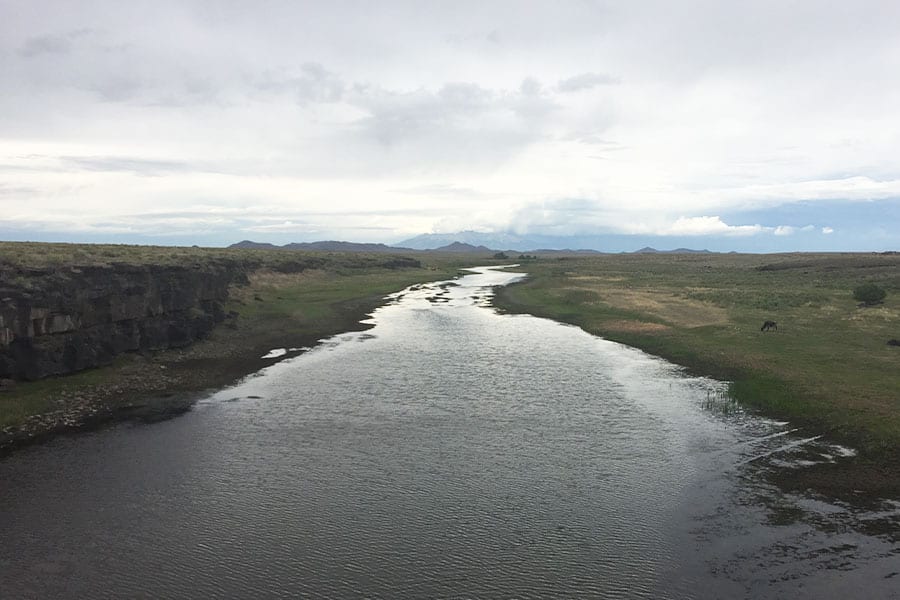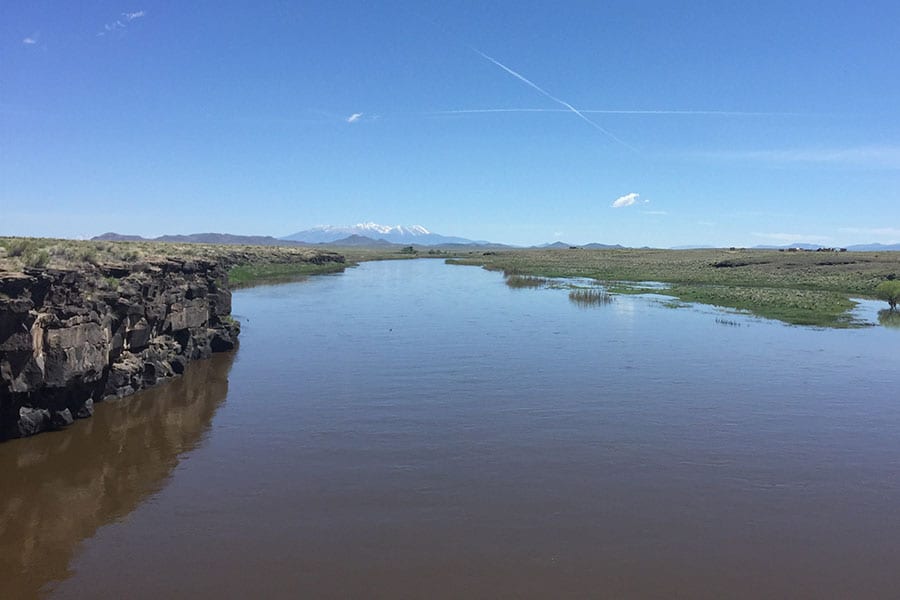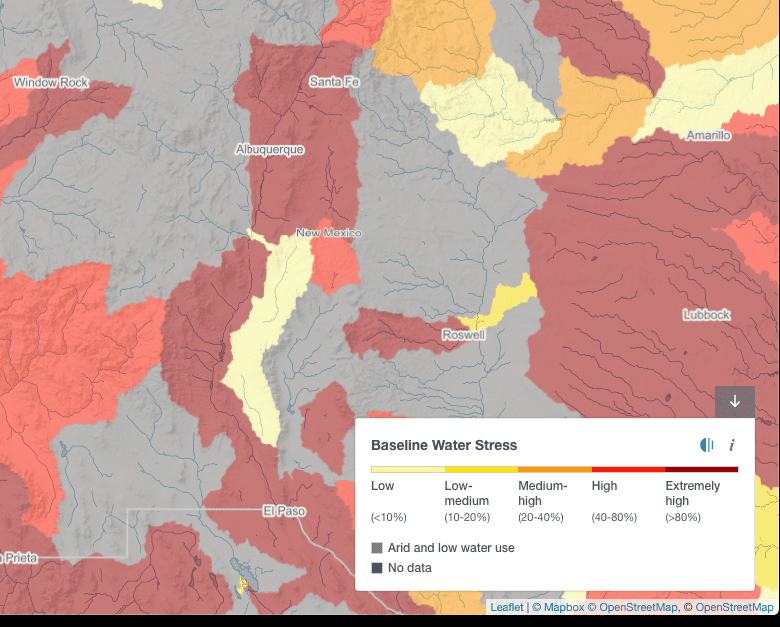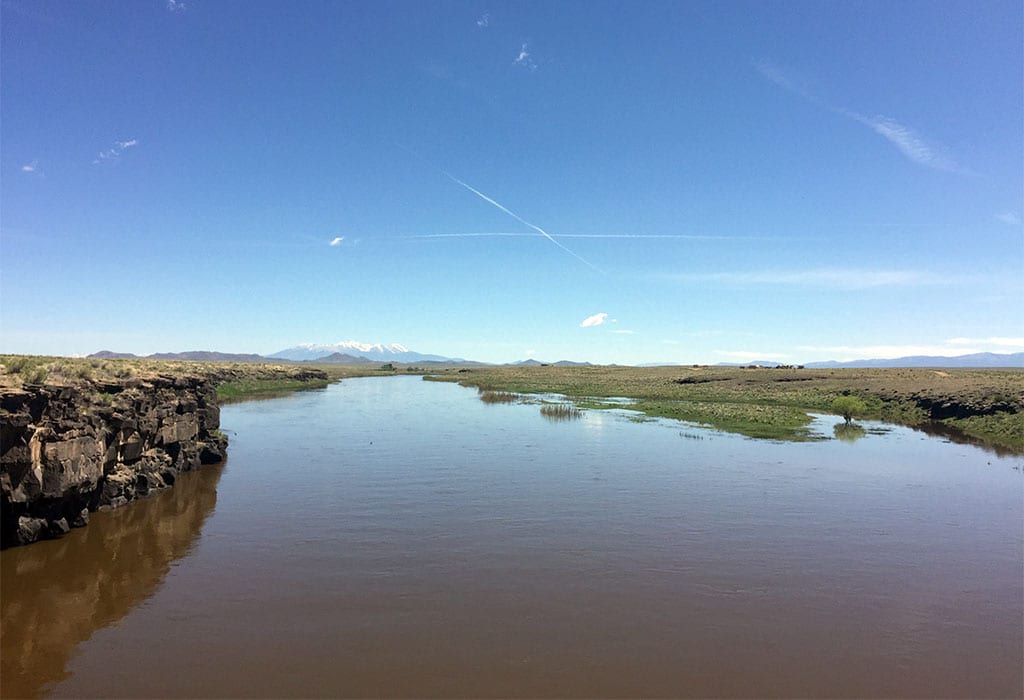In 2018, the Rio Grande nearly dried up completely at the Colorado/New Mexico state line—1700 miles before reaching the Gulf of Mexico. At that point, the Rio enters the Rio Grande del Norte National Monument, and thankfully, the river trickled back to life with water from springs in the Rio Grande Gorge. There was just a whisper of flowing water below Taos, and further south the Rio dried completely. Ask any of northern New Mexico’s rafting or angling guides, and they’ll let you know that 2018 was a hard year for business.
Down in southern New Mexico, Elephant Butte reservoir dropped to three percent of capacity. The Middle Rio Grande Conservancy District kept providing water to farmers by using imported water from the Colorado River Basin, supplemented by the Bureau of Reclamation. Massive stretches of the middle Rio Grande dried up completely; fish died in huge numbers, including a 99 percent drop in the population of the endangered Rio Grande silvery minnow. The Rio would have dried in Albuquerque, but flows were maintained as the water utilities of Albuquerque and Santa Fe pumped groundwater to stop drawing from the river, and the Bureau of Reclamation made sure Albuquerque didn’t see an empty riverbed.
This year, 2019, is proving better, with snowpack above average and a decent monsoon so far. But looming large in every raft guide, angler, water manager, farmer, and environmentalist’s mind is the reality that 2018 very likely looks more like the future than 2019.


The fact is that after 100 years of water mismanagement and with the obvious warming of the Rio Grande Basin with the climate crisis, we need to take action now or the region will likely plunge into permanent drought. The Rio Grande is already drying and dying, and those in power are doing little to change that outcome.
That’s why WildEarth Guardians is starting the Living Rio Campaign to give the Rio a right to its own water and freedom to flow, so it can be a living river, and continue to support the ecological foundation of an entire region, even in the hard times ahead. Our first priority is to persuade Governor Michelle Lujan Grisham to step up as a leader for living, thriving rivers in New Mexico, and to use her power to ensure her administration is working for healthy waterways in New Mexico that will benefit wildlife and bolster the many communities that rely on living rivers.
Over the past three weeks, Guardians hosted Living Rio Campaign events in Santa Fe and Albuquerque, with close to 100 attendees at four events. The purpose of the events was to inform people of the plight of our rivers and to get them to act and let the governor know that New Mexicans care about the Rio. If you’d like to raise your voice, we’ll be hosting events in Abiquiu, Las Cruces, Socorro, and Taos next, and you can also sign our petition.
A recent study by the World Resources Institute revealed that New Mexico has the worst water prospects of any place in the United States, on par with the United Arab Emirates. Whether you know it or not, our rivers are dying, and with them go millions of years of ecological diversity that are the foundation for communities around the state. Starting with our biggest, most important waterway, the Living Rio campaign is addressing 100 years of water mismanagement to attain rivers with rights to their own water that can support many future generations in the American West.

Courtesy of the World Resources Institute
Follow the Living Rio Campaign on Facebook, Instagram, and Twitter
